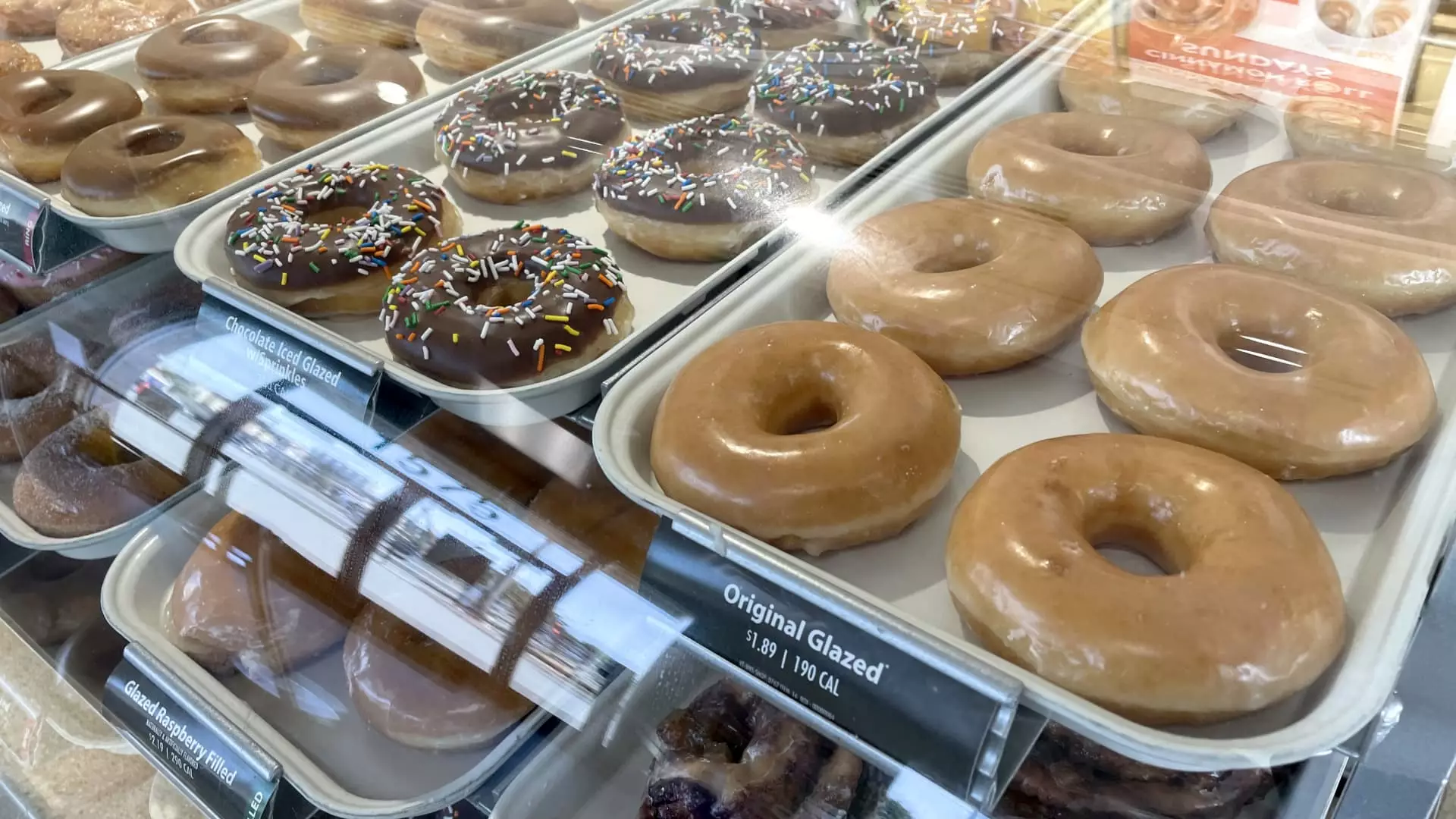McDonald’s recently announced its plan to sell Krispy Kreme doughnuts at its restaurants nationwide by the end of 2026. This partnership will mark a significant expansion for Krispy Kreme, as the doughnut chain doubles its distribution to meet the demands of the collaboration. McDonald’s will have exclusive rights as the fast-food partner for Krispy Kreme in the U.S. This move is seen as a strategic opportunity for both companies to enhance their offerings and reach a wider customer base.
Krispy Kreme operates using a unique “hub and spoke” distribution model, enabling the efficient production and distribution of its beloved doughnuts. The chain utilizes production hubs, which can be stores or doughnut factories, to send freshly made treats to various retail locations like grocery stores and gas stations on a daily basis. This model has proven successful for Krispy Kreme, allowing it to deliver its doughnuts to 6,800 third-party stores as of December 31. With McDonald’s approximately 13,500 restaurants in the U.S., the partnership presents a tremendous opportunity for Krispy Kreme to expand its market presence and increase brand visibility.
In addition to leveraging its existing infrastructure, Krispy Kreme has been investing in expanding its capacity to cater to the growing demand, particularly from McDonald’s locations that were previously out of reach. The partnership with McDonald’s will not only enhance Krispy Kreme’s distribution network but also improve its overall efficiency and productivity. This expanded reach will enable Krispy Kreme to explore new opportunities in grocery and convenience stores while streamlining its production process for increased profitability.
The relationship between Krispy Kreme and McDonald’s began with a test where Krispy Kreme doughnuts were introduced in nine restaurants. The positive response led to the expansion of the pilot to 160 restaurants in Louisville and Lexington, Kentucky. Following the success of these initial trials, the companies have decided to roll out the doughnuts nationwide. This strategic move will not only benefit McDonald’s by enhancing its bakery and breakfast offerings but also support Krispy Kreme’s goal of reaching over 100,000 points of access globally in the long term.
Despite the promising outlook of the partnership, Krispy Kreme has faced challenges in the market, with its shares declining by 20% over the past year. Investors have expressed concerns about potential competition from weight loss drugs like Novo Nordisk’s Ozempic affecting Krispy Kreme’s sales. Similarly, McDonald’s has witnessed fluctuations in its stock performance, although it has managed to attract consumers with its affordable food and beverage options. As both companies navigate these market dynamics, the success of their partnership remains to be seen.
The collaboration between McDonald’s and Krispy Kreme presents a compelling opportunity for both companies to expand their market presence and offerings. With an innovative distribution model, enhanced production capabilities, and a strategic focus on market expansion, this partnership could pave the way for sustained growth and profitability. As the two iconic brands join forces, the coming years will be crucial in determining the success and impact of this union on the competitive fast-food industry.


Leave a Reply